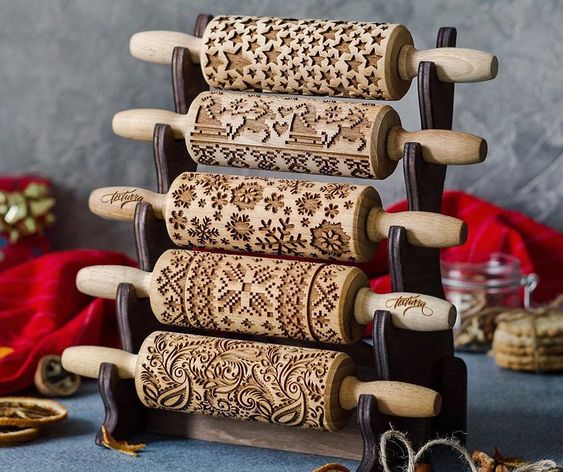Introduction:
In the symphony of kitchen tools, certain instruments play a quiet but indispensable role. Among them, the rolling pin stands as an unsung hero, quietly contributing to the creation of countless culinary masterpieces. In this blog post, we will embark on a journey to uncover the magic behind rolling pins, exploring their history, diverse designs, and the pivotal role they play in transforming humble ingredients into delectable works of art.
A History of Rolling Pins:
Rolling pins have been essential tools in kitchens around the world for centuries. Their history can be traced back to ancient civilizations, where various cultures devised ingenious ways to flatten and shape dough. From simple cylinders to intricately carved implements, rolling pins evolved alongside culinary traditions, becoming a staple in households globally. Today, they continue to bridge the gap between tradition and modernity in the culinary world.
Versatility in Design:
Rolling pins come in a myriad of designs, each tailored to specific culinary tasks. The classic straight rolling pin, with its cylindrical form and handles, is a familiar sight in many kitchens. French rolling pins, tapered at the ends and lacking handles, offer a different grip and control for delicate pastries. Marble rolling pins provide a cool surface, ideal for working with buttery doughs, while embossed rolling pins add artistic flair by imprinting intricate patterns onto surfaces. The diversity in design allows chefs and home cooks alike to choose the perfect rolling pin for their culinary creations.
Material Matters:
Rolling pins are crafted from various materials, each influencing the rolling process and final outcome. Traditional wooden rolling pins, often made from hardwoods like maple or beech, offer a balance of weight and warmth. Marble rolling pins, with their cool touch, are favored for handling delicate pastry work. Stainless steel rolling pins, lightweight and easy to clean, find a place in modern kitchens. The choice of material adds another layer of nuance to the art of baking and dough preparation.
Precision in Pastry:
Rolling pins are precision tools in the world of pastry, allowing chefs to achieve the desired thickness for doughs and pastries. From the thin layers of puff pastry to the thicker sheets for pie crusts, the rolling pin is the maestro guiding the symphony of baking. Its smooth, controlled motion transforms raw ingredients into the foundations of culinary delights, showcasing the importance of this seemingly simple tool.
Beyond Baking: Creative Uses of Rolling Pins:
While rolling pins are synonymous with pastry and baking, their utility extends beyond the world of dough. This section of the blog can explore creative uses of rolling pins, such as crushing cookies for crusts, tenderizing meat, or even crafting handmade pasta. The versatility of the rolling pin makes it a multifunctional tool in the kitchen.
Caring for Your Rolling Pin:
To ensure the longevity of a rolling pin and maintain its performance, proper care is essential. This section can provide practical tips on cleaning, storing, and addressing common issues like sticking dough or warping, offering readers guidance on how to keep their rolling pins in top shape.
Conclusion:
In the culinary realm, where precision and technique reign supreme, the rolling pin emerges as an unsung hero. Its role in shaping and transforming raw ingredients into culinary delights is both practical and poetic. As we celebrate the art of baking and cooking, let’s take a moment to appreciate the humble rolling pin—a timeless tool that continues to roll out the magic in kitchens around the world.

